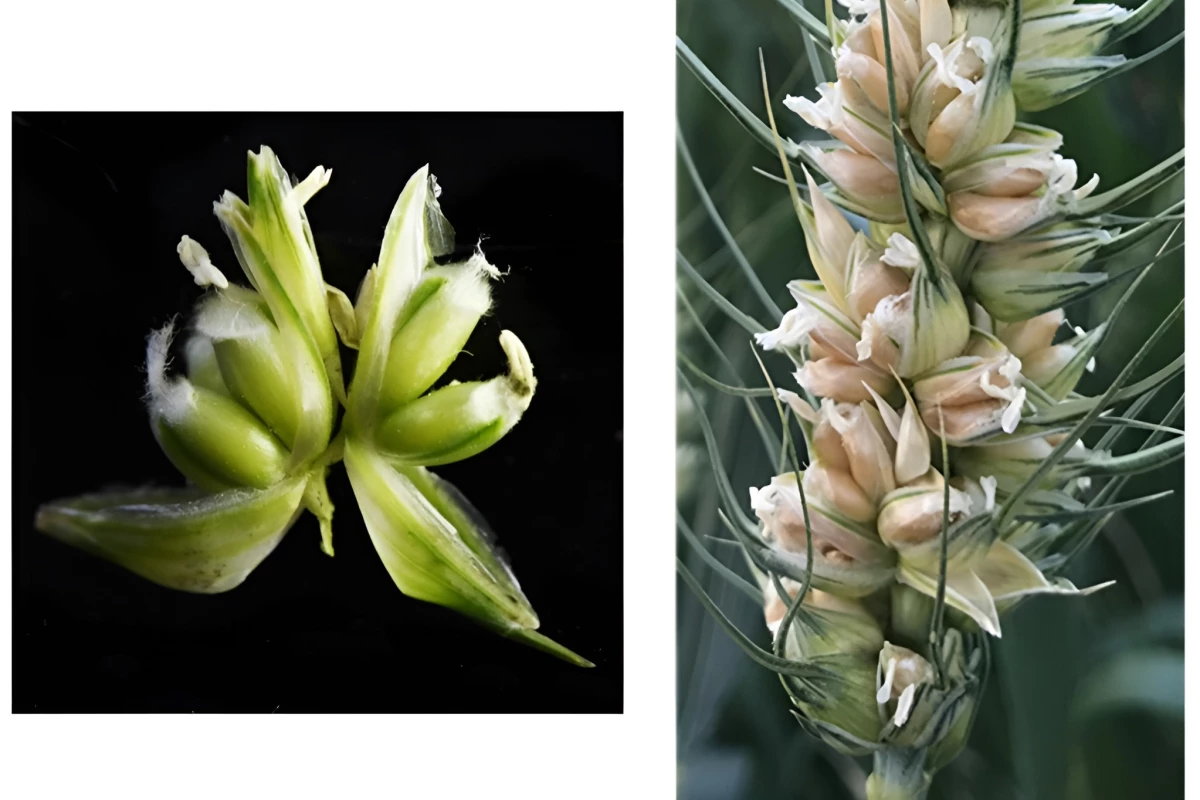Science
Scientists Unlock Genetic Secret to Triple Wheat Grain Yields

Recent research from the University of Maryland has unveiled a genetic breakthrough that could potentially triple wheat grain yields without requiring additional land, water, or fertilizer. Scientists have identified the genetic mechanism behind a rare mutant wheat variant known as MOV (multi-ovary) wheat, which can produce multiple grains from each seed head floret.
Typically, a standard wheat plant’s floret generates a single ovary that develops into one grain. However, MOV wheat can possess up to three ovaries per floret, significantly enhancing grain production. The challenge has been understanding the genetic basis for this trait.
Through meticulous DNA mapping, researchers compared the genetic profiles of MOV wheat and traditional bread wheat, pinpointing a previously dormant gene called WUSCHEL-D1 (WUS-D1). This gene becomes active in MOV wheat and promotes the development of additional female flower parts, including pistils and ovaries. The activation of WUS-D1 could lead to increased grain output in cultivated wheat plants.
Implications for Wheat Breeding
According to Associate Professor Vijay Tiwari, co-author of the study, “Pinpointing the genetic basis of this trait offers a path for breeders to incorporate it into new wheat varieties, potentially increasing the number of grains per spike and overall yield.” The research aims to leverage gene editing techniques to facilitate the activation of WUS-D1 in existing wheat strains.
The findings were published in the journal Proceedings of the National Academy of Sciences, marking a significant step forward in agricultural genetics. If successfully implemented, this discovery could have profound implications for food security, particularly in regions where wheat is a staple crop.
The potential to enhance grain yields while conserving resources aligns with global efforts to improve agricultural efficiency. As the world faces increasing challenges related to food production and climate change, innovations like this offer hopeful avenues for sustainable agriculture.
The researchers are optimistic about the future applications of their work, emphasizing that the activation of WUS-D1 could lead to a new era of high-yield wheat varieties. As they move forward with their studies, the agricultural community watches closely, eager for advancements that could reshape food production on a global scale.
-

 Business1 week ago
Business1 week agoIconic Sand Dollar Social Club Listed for $3 Million in Folly Beach
-

 Politics1 week ago
Politics1 week agoAfghan Refugee Detained by ICE After Asylum Hearing in New York
-

 Health1 week ago
Health1 week agoPeptilogics Secures $78 Million to Combat Prosthetic Joint Infections
-

 Science1 week ago
Science1 week agoResearchers Achieve Fastest Genome Sequencing in Under Four Hours
-

 Lifestyle1 week ago
Lifestyle1 week agoJump for Good: San Clemente Pier Fundraiser Allows Legal Leaps
-

 Health1 week ago
Health1 week agoResearcher Uncovers Zika Virus Pathway to Placenta Using Nanotubes
-

 World1 week ago
World1 week agoUS Passport Ranks Drop Out of Top 10 for First Time Ever
-

 Entertainment1 week ago
Entertainment1 week agoJennifer Lopez Addresses A-Rod Split in Candid Interview
-

 World1 week ago
World1 week agoRegional Pilots’ Salaries Surge to Six Figures in 2025
-

 Science1 week ago
Science1 week agoMars Observed: Detailed Imaging Reveals Dust Avalanche Dynamics
-

 Top Stories6 days ago
Top Stories6 days agoChicago Symphony Orchestra Dazzles with Berlioz Under Mäkelä
-

 Business1 week ago
Business1 week agoMcEwen Inc. Secures Tartan Lake Gold Mine Through Acquisition









